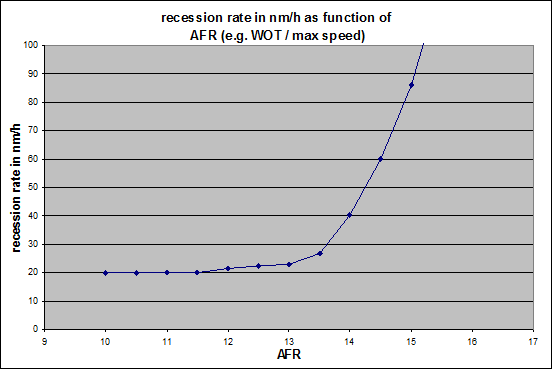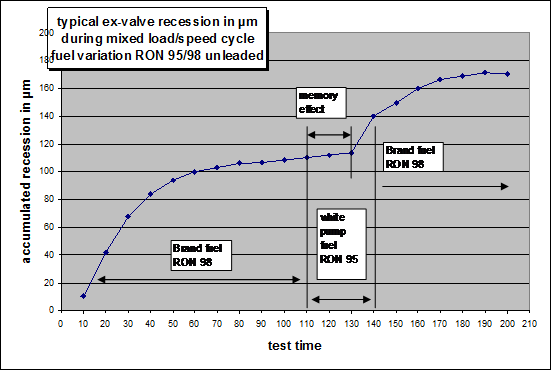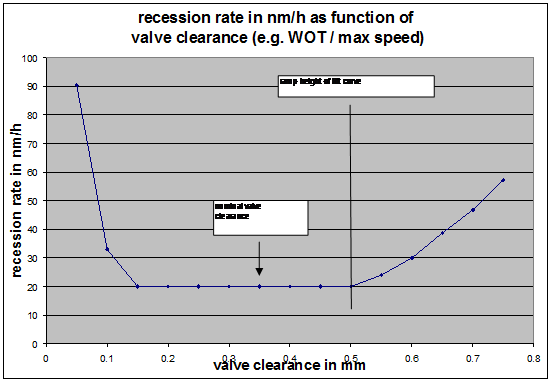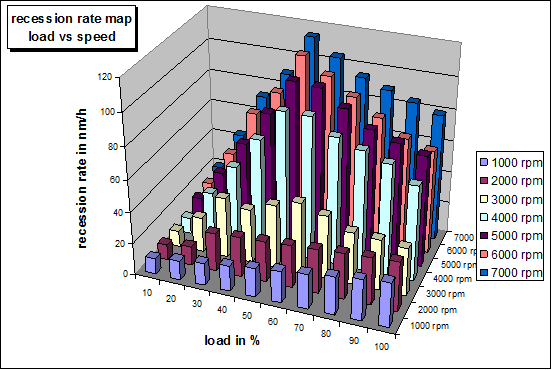Site: Danish | English
Moto Guzzi frame numbers - is your bike what's its supposed to be ?
Gasoline - will a Moto Guzzi run on unleaded gasoline ?
Expected mileage of parts - a VERY rough guide to the expected lifetime of various parts.
Tuning - information on what will make it go faster.
Brake caliper overhaul - how-to guide.
Wiring - more warnings than help, I guess.
Wiring charts - see or download here.
Carburetor - Dell Orto Manual online
Carburetor - drawings, charts, and a how-to guide.
Gearing - Contains a nice utility for calculating gear ratios,
Special tools - see why you'll need them.
O-rings, seals, and gaskets - what you need to repair.
Technical : The complex stuff - exciting but heavy reading, take your time.
Please contact Gregory Bender with any questions, corrections, or suggestions for improvement.
Technical
Gasoline - will a Moto Guzzi run on unleaded gasoline ?
UPDATED on May 12, 2008
The original text for this chapter was written some years ago when leaded fuel was being phased out in Europe, and everyone was discussing this subject. Funny enough, nobody cares about this anymore - which indicates that there is no real problem with unleaded fuel.
A German engineer with Hyundai cars (and a Moto Guzzi owner, of course) kindly indicated to me that the chapter was a bit outdated, and offered to share his knowledge on the subject.
Peter Birtel is a real capacity on this subject, so if you want to know the facts about unleaded/leaded fuel, I strongly suggest you read his text in the box below.
Table of contents
Annotations to the valve seat recession problem
Perhaps you allow that i add briefly sth. to the "unleaded gasoline" chapter, not to teach or correct anyone, just to share my, occasionally business related experience:
A) some facts about leaded/unleaded fuel
- Bleitetraäthyl (lead tetraethyl) was mixed to the fuel only to fight combustion knock; even the "valve train pope" W.D.Bensinger denied any effect on valve seat recession - in 1954 !!.
- Stellite facing exhaust valves as protection against valve burning became mandatory due to leaded fuel; on unleaded fuel a lot of plain valves can survive without Stellite. This chain of clauses is very often put the other way round.
- Side step: In depth investigations at a famous OEM (at a time when they were used do things thoroughly, i.e., before power point spoiled engineers life) revealed a 25% - 50% reduction in wear ALL OVER the engine when running on unleaded fuel.
- The T4 i am going to buy, once was converted to unleaded fuel, even before the leaded fuel was phased out, by the following simple procedure:
- don't touch the engine
- stop filling leaded fuel
- start filling unleaded fuel 95 RON
- operate the bike as usual
Result of this "conversion":
- after 5000 km on unleaded fuel the low speed/high load knocking during hot summer days had disappeared, because the nasty deposits on the piston, valves and the combustion chamber had been scavenged by the unleaded engine operation
- valve clearance check did not indicate any recession even during the next 40000 km on unleaded fuel
- On my beloved Tremezza i made the same conversion - with the same result.
- During my service at FMC i have spent tons of fuel on the recession problem and came, amongst others, to the conclusion: lead is poison to the engine !
Yes, this is a black and white statement, and i am also aware of some exceptions (seemingly!) - but the whole story would end up in a novel.
What is the practical recommendation for the milk maid in the neighbourhood, who might seek for some safety margin ?
Use RON 98 unleaded but not from white pump stations - that's the best for the engine, and it's a must for tuned (big barrel) engines.
WARNING: the following sections are pure neurotoxin to arm chair strategists – reading it is on your own risk
B) some facts about valve seat recession:
What are the parameters which are most likely to influence or provoque valve seat recession ?
The following charts are to give a generic impression; the given values have been dug out of my memory – magnitude and correlation however are accurate enough to demonstrate the generic response of recession to the respective parameter. The unit "nm/h" (= nanometer per hour) is a typicel unit when applying the RNT (Radio Nuclid Tracer) method on wear measurements. This technology allows to measure valve seat wear propagation (or any other metallic wear) during engine operation on line.
In order of priority the influencing parameters are:
- A/F ratio:
Comment: the closer the AFR comes to stoichiometric, the higher will be the recession rate; at or even over stoich the increase is often dramatically due to hotter combustion, higher ex-gas temperature AND, if over stoich, the presence of free oxygen.
- Fuel Quality
Comment: the additives (whatever they are) contained in SUPER PLUS (RON 98) are evidently decreasing the recession rate drastically. Recession can virtually be switched on/off by switching the fuel. This is an absolutely reproducable effect. Applying E25 / 85 (Gasohol/Ethanol) can be seen in the recession behaviour , too. These additives actually do today what the lead was believed to do some decades ago.
- Valve clearance
Comment: the closer the valve clearance comes to a critical minimum (due to wear or due to deliberate setting) the more recession will be registered. Sometimes this is almost like a jerk function. The reason is the elongated phase of creeping aperture just releasing gradually a very narrow gap to the hot gases. This heats up the components (seat and valve) dramatically. The rhs branch of the curve is simply representing the purely mechanical effect of the increasing valve closing velocity when leaving the ramp or overreving the engine (valve bouncing).
- Load and speed
Comment: this chart just depicts how the wear rate can be distributed all over the load/speed map. The peak around high speed/50 % load is predominantly determined by the point(s) where closed loop is abandoned and enrichment becomes effective.
- Other factors
The impact of spark advance , compression ratio, coolant temperature level and gradient etc was almost neglectable.
However the impact of the material combination valve/insert is most evident. It should be sought to get a 50:50 wear distribution between the 2 components. Making a bullet proof insert is quite easy but it will virtually eat away the valve (especially Stellite) and the other way round.
- ?
The above annotations are neither complete nor are they differentiating towards all possible directions, so i really wouldn't be too astonished if someone had a different view on this subject
C) Question without final answer
Why does the legend of the wear reducing effect of leaded fuel still exist ? Elder engines like GMS/FMC once were using grey cast iron cylinder heads with parent material valve seats (i.e. without inserts), occasionally induction hardened at the exhaust side. It was reported that especially these engine types were suffering heavy valve seat recession when changing from leaded to unleaded fuel. BUT, the unleaded fuel became mandatory with the introduction of catalysts. Introducing catalysts however, to allow for their proper functionality, necessitated also all new fuel calibration – with the clear tendency towards enleanment with AFR target 14.7 -> effect see B1. Furthermore the formulation of unleaded but still not knocking fuel has for sure undergone massive alterations to achieve the target(s), i.e., the additivation of the fuel became a different one -> effect see B2. If, on top of B1 and B2, the initial material matching was second best the service intervall does not save the engine from reaching the extremes as revealed in B3. Frequent re-adjustment of decreasing valve gap means reducing the pre-load of the valve spring hence reducing the speed of bounce occurrence.
The above is all based on my personal experience, i.e., on real data, some of which were produced by quite scientifically means, others are based on controlled experiments. I am fully aware that this old fashioned way to assess evidences, fight problems and create solutions cannot compete to the supernatural capabilities of the arm chair strategists nor will it be the remedy to the verbal diarrhoea being continuously spread by the web – but i have to and will live with this my deficiency.
ORIGINAL text
As the worlds sources of leaded fuel dries out and the Moto Guzzi instruction book still prescribes leaded gasoline, many people are in doubt what to do about it. Will The Guzzi run on unleaded fuel?, will lead-in-a bottle do?, or do you have to install new valves and seats in the cylinder head to make it last ?
I don't have a firm “go” or “no go” answer, but I'll tell you what I know and what I do myself, everybody is then free to make his own decision about this matter.
In the old days, alloys for valves and seats wasn't as durable as they are today, so there was a need for a protection “lube” for these parts. The problem was solved by adding lead to the fuel, and from the engineers point of view this was a nice solution.
At a time the world became aware that the environment did suffer from the lead fumes in the exhaust, and to avoid using leaded fuel, better alloys for valves and seats was developed. The market for leaded gas is shrinking as older vehicles are swapped for newer ones, and in many countries leaded gas is prohibited by law.
But a Moto Guzzi will last almost for ever, and when your bike is just 20 years old, there's no need to scrap it yet. But how about unleaded gasoline ?
Here's a number of considerations to help you form your own opinion on the subject:
- California was the first place they put a ban on gas containing lead. From my rather weak memory, I think it was in the early 1980'ies. The other state in the US followed some years later.
- On the US forums and technical discussion boards very very few people talk about problems related to using unleaded gas in a Guzzi.
- The subject is often discussed on Guzzi-forums outside USA, and I've seen many people stating that there's no problems at all, and a few that had problems with the valves seating deeper after a certain mileage.
- I'll allow myself to doubt that the Guzzi factory was ever in so much control of their logistics that they were able to produce special bikes for the US market with high grade valves and seats.
- There's no separate spare part number for valves and cylinder heads for US bikes. Valve seats doesn't have a Moto Guzzi part number at all (but can easily be changed when worn out).
- But, the Americans doesn't generally use their bikes as hard as the Europeans do. Americans have a weird tradition of slow driving, and the motorcycle is mostly considered a leisure time vehicle, not to be used on longer trips.
As you se I don't have a clear answer, but more something like “What do you think yourself ?”
My own procedure is to pour in leaded gasoline when available, and carry a small bottle of lead-replacement in my jacket to use elsewhere. And sometimes I just bunk unleaded without topping up with the lead-replacement. I never had any problems, so I dont bother too much about it.
So I'm not going through the hassle to take it apart for new valves and seats, before they are worn out and need replacement anyway.
If you still have doubts (and are curious enough, you can test it for yourself:
- If your engine is healthy you will not experience larger variations in valve clearance when you check it every 6000 km's. Usually the intake valves are a little loose and the exhaust valves a bit tight.
- Check the valves and start using unleaded fuel.
- Check the valves again after 1000-2000 kms. If the clearance is still ok, you should be able to use unleaded petrol.
- But if the clearances are closing up, it could be a sign of the valves sinking deeper into the valve seats, and the engine can not be considered usable for lead-free gas.




